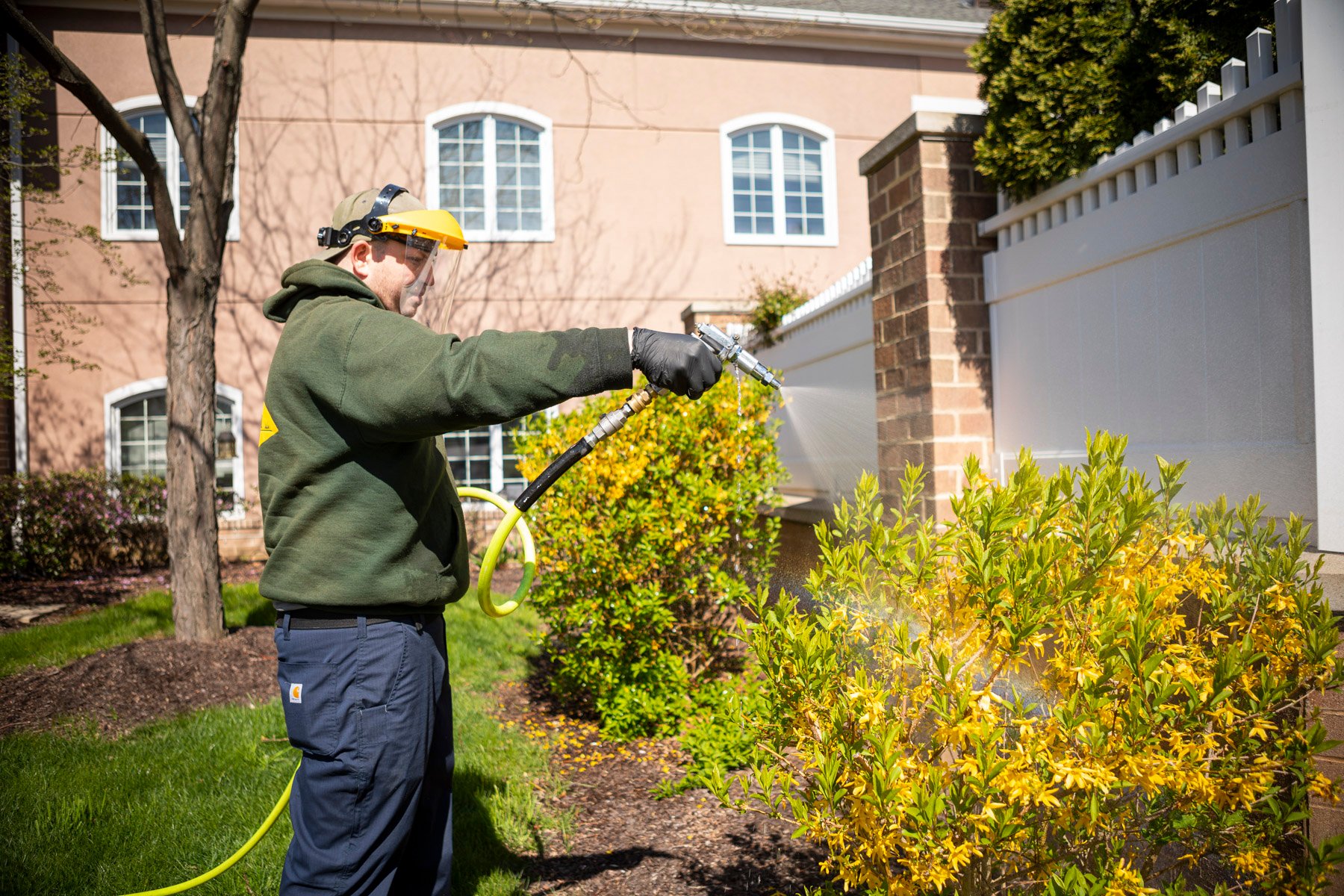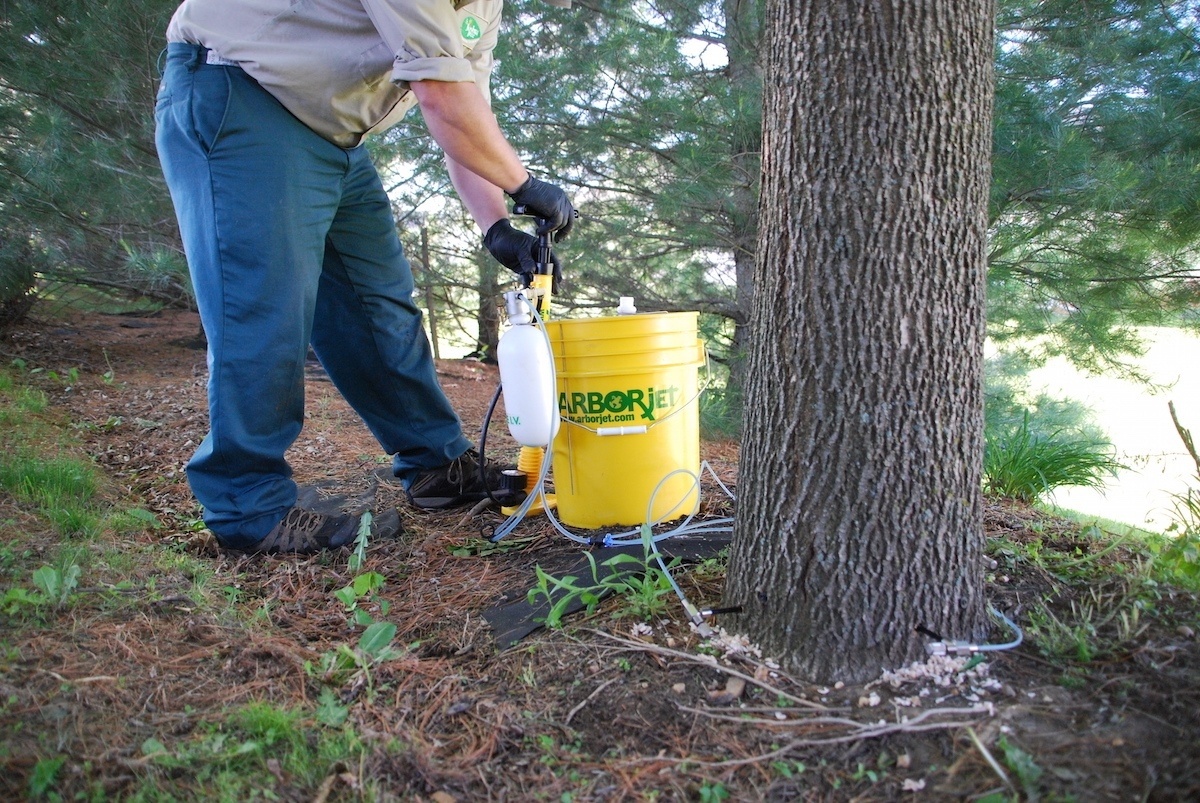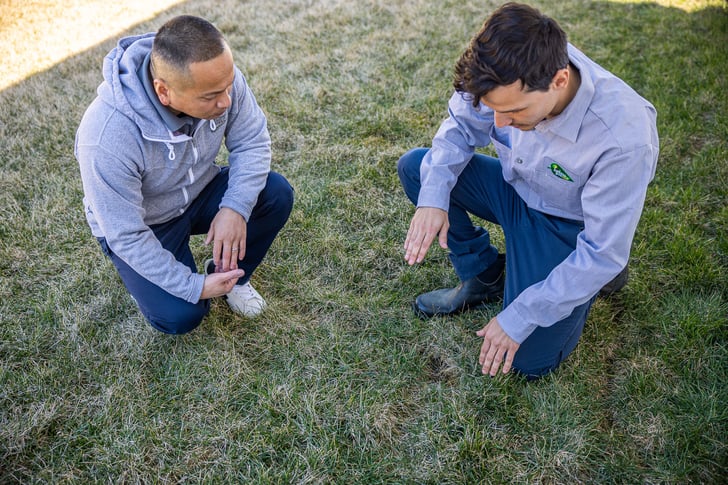Winter weather has been trending toward warmer these days. Many states had their warmest winter on record in 2024.
While a mild winter can be enjoyable as it means spending more time outside, there can be warm winter problems in the lawn and landscape.
Warm winter affects the landscape by potentially bringing plants out of dormancy too early. Early-season warm weather plus moisture can also lead to disease problems in the lawn.
In this article, we’ll dive into how to deal with warm winter problems that might be plaguing your property.
Warm Winter Impact on Plants
During the winter, plants will enter a state of dormancy as a means of protection.
This state of hibernation helps your plants to survive the cold weather. During this period of dormancy, they stop exerting energy and growing. They also store their nutrients and carbohydrates in their roots to provide continued sustenance in the winter when they’re not taking these in any longer.

Dormancy is an important survival mechanism. If plants were to keep growing in the winter, the water they would take in during that process could freeze and cause severe damage to the plant structure.
The trouble with a mild spell in the winter is that it could trigger plants to come out of dormancy and start growing again. But because these mild spells are usually temporary (and colder weather will still return), this can lead to warm winter harm.
We’ve written an article explaining how frost damage can impact plants.
Cold damage occurs to plants that are growing and can cause brown or black leaves, wilting and dropping, and burn-like spots.
Plants are especially prone to harm during the period between winter and spring where we get bursts of warm spells but winter weather isn’t completely over. You can protect your plants during this time by covering them with sheets and blankets if they’ve already started to grow.
Early bloomers like bulb-flowering plants (think daffodils and tulips) that pop up the soonest might be the most at risk for damage. But any plant that has come out of dormancy could be damaged.
If you do notice that your plant has experienced frost damage, do not trim it back yet as you could cause further harm. Those cold damaged areas (which usually show up as black or brown spots) are protecting the rest of your plant by acting as a shield. Removing that shield will expose the rest of the plant to additional damage.
Trimming off frost damage also stimulates new growth which just continues the cycle of harm. You’ll want to wait it out for now. Although it can be frustrating, oftentimes many plants will bounce back from frost damage. They may just need some extra TLC as they recover.
Warm Winter Problems with Disease and Pests
Your landscape could also experience warm winter harm from diseases and pests.
Diseases and pests usually take a break in the winter when the temperatures are too cold for these landscape invaders to cause trouble and spread. But as you might have guessed, a mild winter could mean that diseases and pests emerge early (or never take a rest).
Leaf Spot Disease and Powdery Mildew are two fungi that we typically don’t see until the spring. But a mild winter could mean they start growing on plants sooner.

Landscape pests may also fail to die off over the winter and become active much sooner on your plants. Warm and wet conditions can actually create a breeding ground for many types of pests.
This is a problem not only for your plants but for you and your loved ones, too. After a warm winter, you might see an influx of pests like ticks, mosquitoes, and fleas.
A mild winter can mean you’re going to need to be more on top of pest control moving forward.
Warm Winter Effect on Lawns
As far as how the warm winter will impact your lawn, it’s quite similar to the issues you may experience with your landscape. Just like your plants, your lawn will go into a state of dormancy to protect itself during the cold weather months. This is a defense mechanism.
But if your lawns come out of dormancy too soon, they could be more prone to damage.
Crown hydration is a condition that occurs when we experience a sudden warm spell in the midst of the winter. This stimulates the grass to come out of its dormant state and start taking in water. But when temperatures return to freezing, that water inside of the grass freezes and this can kill the crown.

Warm spells can also lead to a problem with soil heaving (also called “frost heave”). If the freeze/thaw cycle has caused frequent expansion and contraction of the water in your soil, this can lead to the soil lifting toward the surface. If severe, this could require a drainage solution and regrading.
Another warm winter effect on lawns is early weed growth.
Winter usually means a break from weeds. But if we have a mild winter, you might be seeing more weeds pop up in your lawn (and sooner).
Ultimately, you want to make sure that you’re working with a lawn care professional who is aware of what’s going on in local lawns. There is an optimal time window during which pre-emergent needs to be applied for crabgrass. That window is based on soil temperatures. You’ll want to make sure that you are working with a professional who is keeping up with that data.
Your Partner in Success Against Warm Winter Problems
When you have a lawn and landscape to take care of, problems can arise at any time of the year. While it’s true that a lawn and landscape’s state of dormancy usually means a break from a lot of issues, warmer winters can change that.
Fortunately, when you have a lawn and landscape professional on your side, you’ll have the best chance of addressing and recovering from any warm winter harm that does occur.
In general, the better shape that your lawn and your plants are in, the better they’ll fare against trouble. That’s why investing in a professional lawn care program and professional plant health care can make a world of difference.
While it won’t mean that you never have any issues, it will mean that your lawn and landscape should bounce back faster. When turf or plants are already struggling, they’re going to be hit harder by these issues.
At Joshua Tree Experts, we’re here to be your partners in success.
Caring for a lawn and landscape can be stressful, particularly when damage occurs. But when you partner with us, we’re here to be your guides. Whether you experience warm winter problems or issues at another time of the year, you know that we have your back.
If you’d like to know more about how Joshua Tree Experts can help meet your lawn and plant health needs at your home, or you have more questions, we’re here to help! Get in touch or give us a call at 833-JTE-TREE to get free expert advice and learn more about our plant health care and lawn care program options!




